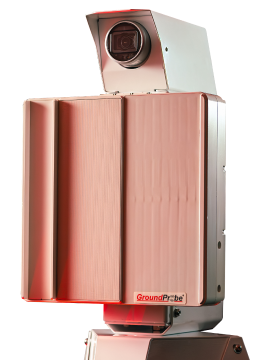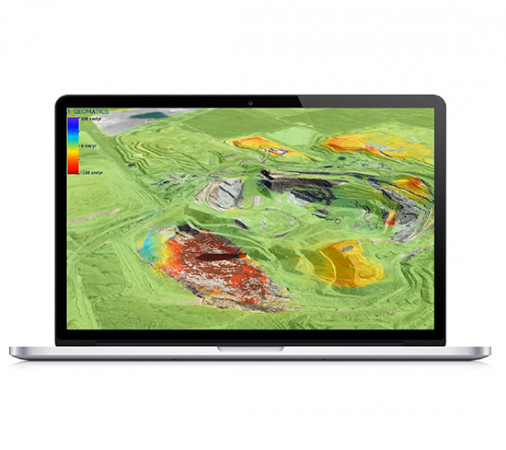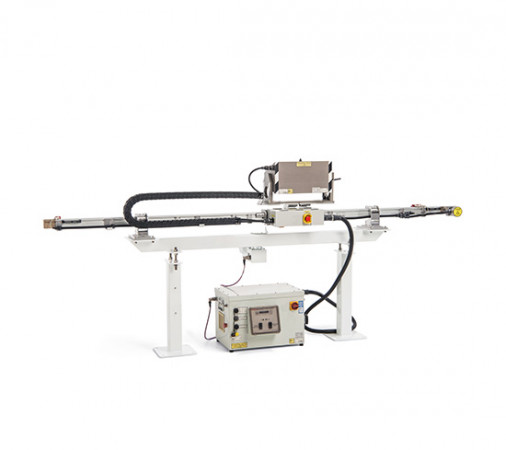A long-term site monitoring is a crucial step for any large mining or civil construction project, ensuring consistent and accuracy visibility of ground movements in the area. In high-risk areas, where gradual deformation needs to be monitored over extended periods, this technology delivers easy-access and accurate data helping to instantly alert teams of ground movements to ensure site safety. GroundProbe’s long-term monitoring systems scan and track slow-moving deformation across a project site over many months, which short-term monitoring campaigns may not otherwise detect.
InSAR Service
The GroundProbe InSAR Service, in partnership with 3vGeomatics (3vG), is an effective tool for monitoring and detecting surface movement. It uses satellite-based radars which conduct scans every time they pass over the mine site.
MÁS INFORMACIÓNSSR-SARx
Designed to identify long-range risks and hazards, the SSR-SARx is a long-range and high-resolution system for the monitoring of tailings dams. The SSR-SARx is a 2D Synthetic Aperture Radar (SAR) designed to detect even the smallest of movements over long periods of time.
MÁS INFORMACIÓNLong-Term Mine Monitoring Systems
Cutting-Edge Technology For Monitoring Mine Stability Over Long Periods
GroundProbe’s long-term radar monitoring systems are designed to deliver continuous monitoring of ground movement and slope stability over extended periods, allowing for early detection of potential slope failures and other geotechnical risks. In environments with increased risk of slope instability, such as mines, tailings dam sites, and civil construction sites, maintining a stable and consistent view of ground movements is crucial for site safety and productivity. Our long-term radar monitoring systems, including the INSAR Service and SSR-SARX radar, use a range of advanced sensors and software to provide real-time monitoring and analysis of ground movement. These radar monitoring sensors can be installed on slopes, structures, and other geotechnical features to measure changes in displacement, deformation, and other parameters over time.
The Challenges of Long-Term Mine Monitoring
Monitoring geotechnical stability over long periods of time comes with a series complex challenges that can compromise site stability and structure. With significant variations in environmental conditions, including seasonal changes, heavy rainfall, or seismic activity, ground conditions are constantly subjected to uncertain slope behaviours.
That’s why the continuous nature of long-term monitoring is built to withstand such conditions, picking up on vast amounts of data that can help form trends and predictive analysis. Traditionally, long-term mine monitoring can be challenged by the nature of certain terrains with some areas being remote or hazardous, making it difficult to install or maintain traditional monitoring systems. However, the biggest challenge for long-term monitoring comes from the need to detect low-frequency, slow-moving deformations that are subtle yet potentially significant. These types of movements often go unnoticed without highly sensitive equipment and may be missed by the infrequency of regular monitoring schedules.
GroundProbe’s long term monitors are specifically designed to address these challenges, with technologies that deliver high-resolution, continuous monitoring, even in difficult-to-access areas. This allows mining and civil operators to feel best equipped with the tools they need to proactively manage geotechnical risks – before they escalate.
Long Term Site Monitoring Solutions at GroundProbe
One of our most advanced long-term radar monitoring systems is the SSR-SARx, which uses radar technology to detect and measure slope movement. The SSR-SARx can detect tiny movements, making it an incredibly sensitive and reliable monitoring tool for examining deformation over long periods. For predictive background monitoring, our GMS-Dual and GMS-Prism can track movements across areas with conditions where a Slope Stability Radar (SSR) may find it hard to monitor. At GroundProbe, our long-term radar mine monitoring solutions are supported by advanced software tools, including the MonitorIQ® Desktop platform, which provides real-time data analysis, visualisation, and reporting. Pair this with our InSAR Service for all-encompassing satellite-based radars that give precise data about changes to the mine site over time.
Manage Your Long-Term Mining Projects with GroundProbe
Are you looking for a comprehensive and reliable long-term approach to monitoring slope stability to ensure your team takes appropriate action before problems become critical? Contact GroundProbe today to learn more and enquire online now.
Long Term Site Monitoring FAQs
How Does Long-Term Radar Monitoring Differ from Short-Term Monitoring?
Long-term radar monitoring is designed to detect slow-moving or gradual deformation over extended periods, from weeks to years. Unlike short-term campaigns that capture immediate or fast-moving changes, long-term monitoring provides continuous data collection to identify early signs of ground movement that may otherwise go unnoticed. This is especially critical in maintaining slope stability and ensuring proactive risk management in large-scale mining and civil projects.
How Accurate is GroundProbe’s Long-Term Radar Technology?
GroundProbe’s long-term radar systems, including the SSR-SARx and inSAR service, are strategically engineered for sub-millimetre accuracy. These high-resolution sensors can detect the smallest changes in ground displacement, enabling early intervention before minor movements evolve into significant geotechnical hazards. Combined with powerful data processing through MonitorIQ® and other advanced software tools, our technology ensures precise, actionable insights for long-term stability management.
Can the Long-Term Radar Monitor be Automated or Remotely Monitored?
Yes! GroundProbe’s long-term radar monitoring systems are fully automated and capable of remote operation. Once deployed, the systems continuously scan designated areas and stream real-time data to visualisation platforms. Remote monitoring enables 24/7 oversight from control rooms or off-site locations, reducing the need for in-field personnel and enhancing safety, particularly in hazardous or hard-to-access areas.






